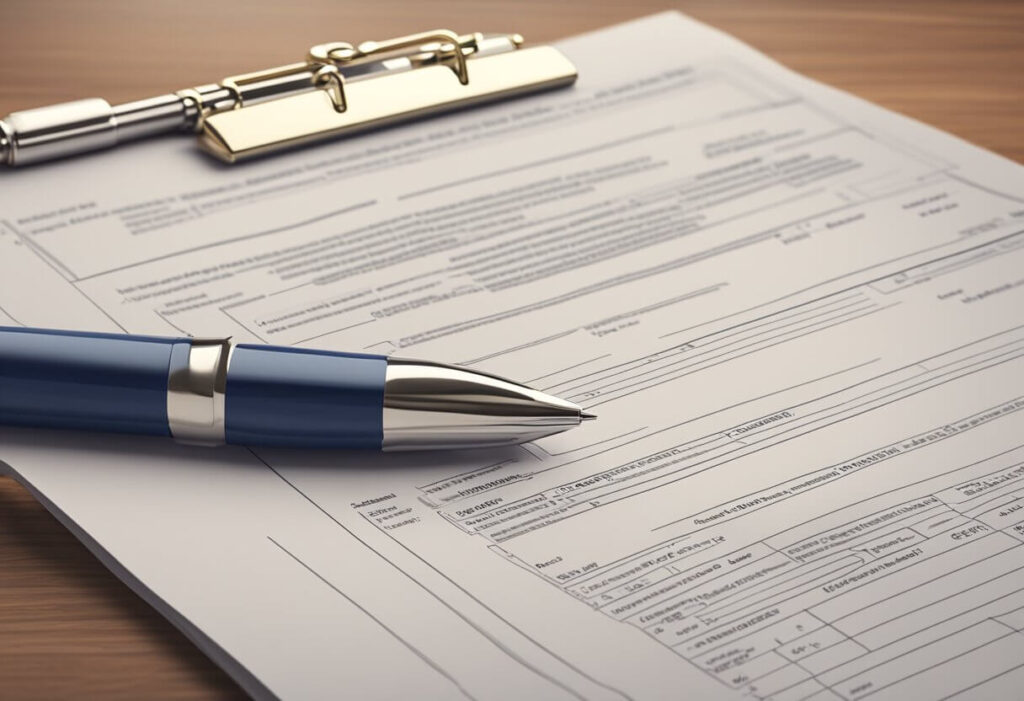A Potential Legal Claim Is Recorded: Everything Explained!!

Lawsuits, product warranties, environmental regulations – operating a business in today’s complex legal landscape means dealing with potential legal claims is inevitable. When should a company record these potential liabilities on their financial statements?
Accounting rules state that potential claims should be recorded when the loss is probable and the amount can be reasonably estimated. Recording contingent liabilities provides transparency for stakeholders and properly reflects risks facing the company.
In this comprehensive guide, we’ll cover:
- What are contingent liabilities
- Key accounting criteria for recording potential claims
- GAAP guidelines for reporting contingent liabilities
- Common examples like pending lawsuits and warranties
- Why proper recording is important
- Assessing probability and amount of potential claims
- The accounting entry to record contingent liabilities
Understanding the proper way to account for uncertain potential legal claims is key for businesses navigating uncertain legal waters. Let’s dive in…
What Are Contingent Liabilities in Accounting?
A contingent liability is a potential future obligation that depends on some uncertain or unpredictable event. Some examples include:
- Pending legal issues like lawsuits or regulatory actions
- Product warranties that commit a company to potential future repair costs
- Environmental regulations that may require cleanup costs down the road
These liabilities are considered “contingent” because their timing and amount depend on an uncertain future outcome. Just because they are uncertain, however, does not mean they can be ignored in company financial statements.
Accounting rules govern how potential contingent liabilities should be recorded and disclosed, striking a balance between transparency for stakeholders and uncertainty facing the business.
Key Criteria for Recording a Contingent Liability

When assessing whether a potential legal claim should be recorded, accountants evaluate two key criteria:
1. Probability of Occurrence
For a contingent liability to be recognized on the balance sheet, the future loss must be probable – usually considered over 50% chance of occurring.
If the probability is less than likely, under 50%, then generally the potential claim is not recorded.
2. Ability to Reasonably Estimate the Amount
In addition to being probable, the potential loss must be able to be reasonably estimated given the available information.
If the amount cannot be reasonably estimated, then the claim would not be recorded either.
Meeting both these criteria – a probable likelihood and an ability to reasonably estimate the loss amount – means the potential claim should be recognized as a liability.
The Journal Entry to Record a Contingent Liability
Recording a contingent liability involves a journal entry to debit the appropriate expense account and credit the accrued liability account.
For example with a potential legal claim:
Debit: Legal Expense – $100,000
Credit: Litigation Liability – $100,000
This entry immediately recognizes the expected loss on the income statement, while establishing a liability on the balance sheet for the amount owed.
As more information becomes available, these accounts can be updated to reflect changes in the loss expectation.
GAAP Guidelines for Reporting Contingent Liabilities

In the United States, GAAP accounting rules guide the recognition and disclosure of contingent liabilities for public companies.
GAAP classifies contingent liabilities into three categories:
1. Probable Loss Liabilities
These must be recorded in the financial statements because the loss is likely and the amount can be reasonably estimated. This covers liabilities that meet both key criteria.
2. Reasonably Possible Loss Liabilities
These should be disclosed in the footnotes only – meaning the loss is reasonably possible (but not probable) or an amount cannot be reasonably estimated yet.
3. Remote Loss Liabilities
These do not have to be recorded or disclosed because the loss is unlikely – occurrence less than remote.
Categorizing potential claims based on probability guides financial statement treatment and ensures transparent reporting.
Common Examples of Contingent Liabilities
Some of the most common contingent liabilities facing companies:
Pending Lawsuits
Legal claims from customers, partners, government agencies or other parties involve inherent uncertainty.
Assessing the claim’s merit and estimating potential damages are key first steps.
If liability from an ongoing lawsuit is deemed probable and estimable, recording an accrued legal liability represents good accounting practice.
As the case progresses, expected loss amounts can be updated accordingly.
Product Warranties
Most companies that manufacture or sell products provide assurance that items will be free of defects for a certain coverage period.
While companies cannot know precisely how many claims may arise, analyzing historical data allows for developing reasonably accurate warranty cost estimates.
Recording expected warranty costs as a contingent liability provides stakeholders a more accurate view into expenses companies may face from commitments made to customers.
Environmental Liabilities
Regulations often stipulate that companies must fulfill obligations like hazardous waste cleanup, facility decommissioning costs, or environmental damage claims.
Estimating timing and costs involved in future remediation work can be complex and depend on evolving rules.
But where environmental liabilities appear probable and costs can reasonably be gauged, companies should book accruals for transparency.
In each of these common cases, analysis about probability and amount estimation drives proper accounting treatment per GAAP.
Why Recording Contingent Liabilities Matters?

Beyond adhering to accounting compliance, accurately presenting contingent liabilities serves several important purposes:
Reflects Financial Health – By immediately recognizing expected losses on the income statement and balance sheet, financial statements better indicate risks the business faces.
Informs Decisions – Understanding potential legal, warranty and regulatory liabilities allows companies to make wise choices about managing financial and operational exposure.
Provides Transparency – Recording uncertain potential claims where criteria are met gives stakeholders like shareholders more insight and confidence. Disclosure requirements further transparency.
While tempting to avoid booking uncertain expected costs, following contingent liability accounting rules better reflects near term business health and exposure.
Steps for Assessing and Recording Potential Legal Claims
Whenever a new legal claim emerges, accountants can follow this general process to ensure proper accounting treatment:
- Consult experts – Discuss potential case details with appropriate internal and external legal counsel or advisors to analyze merits and possible financial impact.
- Evaluate probability – Based on expert input and prior relevant cases, determine probability of liability being found and resulting cash outlay. Ensure over 50% threshold before considering recording.
- Estimate loss amount – Leverage expert recommendations and previous damage precedent to quantify the potential loss if the claim were to succeed or settle.
- If probability and estimate criteria are met, record journal entry to recognize contingent liability.
- If uncertain on probability or amount, disclose in footnotes noting material details on the claim.
Following consistent evaluation methods and accounting approach provides the best of both perspectives – recognizing probable liabilities while disclosing the inherently uncertain claims.
The Bottom Line
Determining the right accounting treatment for pending legal claims involves assessing two key criteria – the probability the case results in a loss, and an ability to reasonably quantify the damages amount.
Where a potential liability is probable and estimable, GAAP rules dictate formally recording the expected loss as an accrued liability on company financial statements.
For less certain claims, disclosure in the footnotes is still required to inform financial statement users and provide greater transparency into risks the business faces.
While complex at times, properly evaluating and presenting contingent liabilities allows stakeholders to see a more accurate picture of company health and management of legal exposure.






